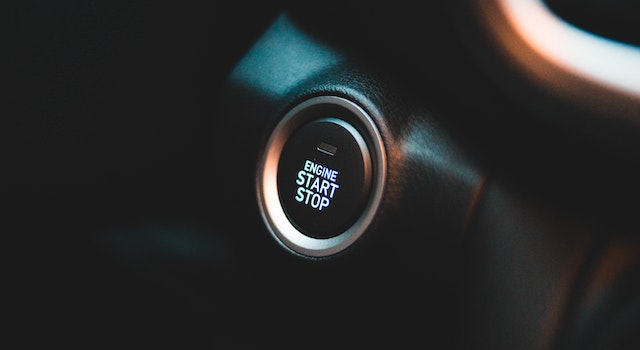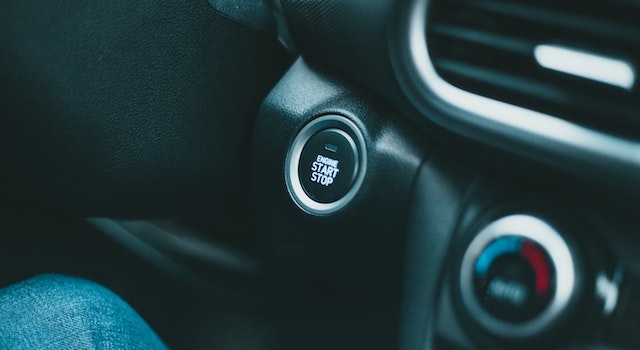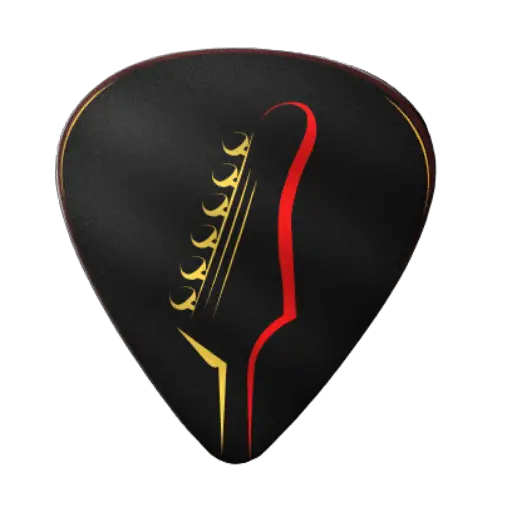How To Jump Start A Car Without Jumper Cables?
Start by turning on the Ignition, pushing the clutch down, putting the car into first gear, and ensuring that both the hand and foot brakes are off. Now start to push the car, and once you get up to 5mph or so, warn those pushing to back off and engage the clutch smoothly but fairly quickly.
How Do You Start A Car Battery Without Jumper Cables?
We’ll explore various ways to kick-start your car battery without relying on those conventional cables. Let’s dive in!
The Classic Push-Start Method
One of the oldest tricks in the book is the classic push-start method. If you drive a manual-transmission car, this technique will work like a charm. Here’s how to do it:
- Gather a Team: Enlist the help of a few strong individuals to assist you with the push-start process. The more, the merrier!
- Find a Slope: Look for a sloped or inclined surface where you can safely roll your car to gain some momentum.
- Turn the Ignition On: Insert your car key and turn the Ignition to the “on” position, ensuring your battery is ready to transfer power.
- Put the Car in Gear: Press the clutch pedal and shift the car into second gear.
- Start Pushing: As your helpers start pushing the car from behind, release the clutch pedal quickly to engage the engine. If done correctly, the engine should roar to life.
- Accelerate and Charge: Once the engine starts, press the accelerator pedal to keep the engine running and charge the battery.
This method requires some physical effort, but it can be a lifesaver when you’re in a pinch.
Utilizing Gravity: The Bump-Start Method
Similar to the push-start method, the bump-start technique takes advantage of gravity and a slope to get your car running. It works well for both manual and automatic transmission vehicles. Follow these steps:
- Find a Downhill Slope: Look for a gentle downward slope where you can safely initiate the bump-start process.
- Turn the Ignition On: Turn the Ignition to the “on” position so that the battery is ready to transfer power.
- Build Some Speed: Release the brake and allow the car to roll down the slope. Gain a bit of speed, but not too much.
- Engage the Gear: For manual transmission, shift to second gear. For automatic, shift to drive (D).
- Release the Clutch (Manual Only): If you have a manual transmission, release the clutch pedal quickly once the car gains enough speed. The engine should start running.
- Accelerate and Recharge: Once the engine starts, press the accelerator to keep the engine running and recharge the battery.
Remember that this method might take a couple of attempts to get right, so be patient.
Jump-Starting Without Jumper Cables
If you don’t have jumper cables on hand, don’t worry; you can still jump-start your car using alternative items you might find around you. Here’s how:
- Using a Rope: If you have a strong rope or cord available, you can create a makeshift jumper cable. Connect one end of the rope to the positive terminal of the dead battery and the other end to the positive terminal of a working battery (from another vehicle or a separate power source). Repeat the same for the negative terminals. The energy transfer should allow you to start your car.
- Using Chain or Wire: Similar to the rope method, if you have a chain or a piece of wire, you can use it as a substitute for jumper cables. Attach one end to the positive terminal of each battery and the other end to the negative terminal. Ensure proper connections and safety measures before attempting to start the car.
- Using Capacitors: In a more advanced approach, you can use capacitors to jump-start your car. This method requires some electrical knowledge and expertise. It involves charging capacitors from a power source and then discharging the energy into the dead battery to initiate the engine.
Investing in a Portable Jump Starter
To avoid being caught in a helpless situation without jumper cables, consider investing in a portable jump starter. These compact devices pack enough power to jump-start your car multiple times on a single charge.
They usually come with built-in safety features, making them easy to use for anyone. Keep the jump starter charged and ready to go in your car’s trunk or glove compartment for emergencies.
What Household Items Can You Use To Jumpstart A Car?
We’ll explore various ingenious methods that can come in handy when you find yourself with a dead car battery and no traditional jumper cables in sight. While we always recommend using proper tools, it’s essential to know these alternative techniques for emergencies.
The Mighty Power of Baking Soda and Vinegar
Believe it or not, the humble combination of baking soda and vinegar can save the day! If you don’t have jumper cables, you can attempt this method. First, mix baking soda with water to create a paste and apply it to the corroded battery terminals. After letting it sit for a few minutes, clean off the paste.
Next, pour vinegar over the terminals to remove any remaining corrosion. While this method may not be as effective as jumper cables, it might provide enough charge to get your car started.
Aluminum Foil: Your Surprising Savior
Aluminum foil isn’t just for wrapping sandwiches; it can help jumpstart your car too! To use this method, you’ll need to create a bridge between the two batteries. Roll the aluminum foil into long strips and form them into the shape of a bridge, connecting the positive terminals of both vehicles’ batteries. This makeshift solution might provide the necessary electrical connection to start your engine.
A Helping Hand with a Portable Power Bank
In today’s tech-savvy world, portable power banks are common. Not only are they useful for charging your smartphone, but they can also serve as a lifeline for your car. Find a power bank with a suitable voltage output, attach the positive and negative terminals of the bank to the corresponding battery terminals, and try starting your car. Keep in mind that the success of this method depends on the power bank’s capacity and the condition of your car’s battery.
Make Use of Your Headlights
Did you know that your car’s headlights can be used to jumpstart it? This method is a bit tricky, but it can work in dire situations. You’ll need to turn on your headlights and try starting the engine simultaneously. The headlights draw power from the battery, causing a voltage drop that might allow your car to start. If you’re lucky, this method could give you the power you need to drive to the nearest mechanic or auto parts store.
Employing a Multimeter for Testing
A multimeter is a handy tool to have, especially during electrical emergencies. If you suspect that your car battery is the issue, you can use a multimeter to test its voltage. If it reads below 12 volts, there’s a good chance your battery is dead, and jumpstarting it might be the solution. Remember to stay safe and cautious when handling electrical components.
The Old-fashioned Push Start
Before the days of modern ignition systems, push starts were a common way to get a car running. While not suitable for all vehicles, manual transmission cars can still be jump-started this way. Find a friend or a group of helpful strangers, position your car on a downward slope, put the car in second gear, and have everyone push while you release the clutch. The momentum can turn the engine over and get your car running.
Utilizing a Car Battery Charger
If you have a car battery charger at home, you’re in luck. This is one of the most reliable ways to jumpstart your vehicle without jumper cables. Connect the charger to a power source, and then attach the positive and negative leads to the corresponding battery terminals. Let the charger do its job, and once the battery has enough charge, try starting your car. Remember to follow the manufacturer’s instructions for your specific battery charger model.
How Do You Jumpstart A Car Alone?
We will walk you through the step-by-step process of jumpstarting a car alone, ensuring you can get back on the road as quickly as possible.
Safety First
Before we delve into the actual process, it’s essential to prioritize safety. Always park your vehicle in a safe location, ideally away from traffic and on level ground. Engage the emergency brake and turn off the Ignition and all electronic devices in the car. Additionally, put on your hazard lights and wear appropriate personal protective equipment, like gloves and eye protection.
Check the Battery
The first step in jumpstarting a car alone is to assess the battery. Locate the battery, which is usually under the hood in most vehicles. Inspect the battery terminals for any signs of corrosion or damage, as this could be the reason behind the dead battery.
Gather the Necessary Tools
To jumpstart your car, you’ll need a set of jumper cables and a working vehicle with a charged battery. Keep in mind that the jumper cables should be in good condition with no exposed wires. If you’re unsure about the condition of your jumper cables, it’s best to invest in a new set to ensure safety and reliability.
Identify the Battery Terminals
Most car batteries have two terminals: positive (+) and negative (-). The positive terminal is usually marked with a red cap or a “+” symbol, while the negative terminal may have a black cap or a “-” symbol. Identify these terminals on both your dead battery and the charged battery of the other vehicle.
Connecting the Jumper Cables
With both vehicles parked close enough for the jumper cables to reach each other comfortably, it’s time to connect them. Follow these steps:
- Attach one end of the red cable to the positive terminal of your dead battery.
- Connect the other end of the red cable to the positive terminal of the charged battery in the assisting vehicle.
- Take one end of the black cable and connect it to the negative terminal of the charged battery.
- Finally, attach the other end of the black cable to an unpainted metal surface on your car, away from the battery. This serves as the grounding point.
Jumpstarting the Car
Once the cables are securely connected, it’s time to jumpstart your car. Start the engine of the assisting vehicle and let it run for a couple of minutes to charge your dead battery. Keep the engine speed at a moderate level during this process.
Starting Your Car
Now comes the exciting moment—starting your car! Turn the ignition key and attempt to start your vehicle. If it doesn’t start on the first try, don’t panic. Wait for a minute or two, and then try again. If your car still doesn’t start after a few attempts, you may have other issues beyond a dead battery that require professional assistance.
Disconnecting the Jumper Cables
If your car starts successfully, congratulations! You’re almost there. But before you hit the road, it’s crucial to disconnect the jumper cables properly to avoid any damage or safety hazards. Follow these steps:
- Turn off the engine of the assisting vehicle.
- Carefully remove the black cable from the grounding point on your car.
- Detach the black cable from the negative terminal of the assisting vehicle’s battery.
- Remove the red cable from the positive terminal of the assisting vehicle’s battery.
- Finally, disconnect the red cable from the positive terminal of your car’s battery.
FAQ’s
Can I jump-start a car without using jumper cables?
While jumper cables are the most common method for jump-starting a car, you can jump-start a vehicle without them by using an alternative method known as “push-starting” or “bump-starting.” However, this method requires a car with a manual transmission and some help from a friend.
How do I jump-start a car using the push-start method?
To jump-start a car using the push-start method, follow these steps:
- Ensure the car with the dead battery is in neutral and the ignition is turned off.
- Get a friend to help push the car from behind, gaining some speed (5-10 mph).
- Depress the clutch pedal and put the car into second gear (for most vehicles).
- While maintaining the clutch pedal depressed, turn the ignition key to the “ON” position.
- Release the clutch pedal quickly while still rolling, and the engine should start if the battery is the main issue.
Can I push-start an automatic transmission car?
No, push-starting only works with manual transmission cars. Automatic transmission vehicles require a different approach, and jump-starting without jumper cables may not be feasible for them.
Are there any risks involved in jump-starting a car without jumper cables?
Jump-starting a car without jumper cables can be riskier, as it involves relying on physical force and coordination with another person. If not done correctly, it could lead to accidents, injuries, or damage to the vehicles involved. Additionally, push-starting may not work if the battery is not the main problem or if there are other underlying issues with the car.
What should I do if the push-start method doesn’t work?
If the push-start method doesn’t work, it is essential to seek assistance from a professional mechanic or a roadside assistance service. They can diagnose the problem accurately and provide a suitable solution for starting the car safely.
Can I use a hill to aid in push-starting the car?
Yes, using a hill or an incline can make push-starting easier, as gravity helps the car gain momentum with less effort from the pushers. Park the car facing downhill, and ensure the area is clear of any obstacles or traffic. Follow the regular push-start method while utilizing the downhill slope to your advantage.













